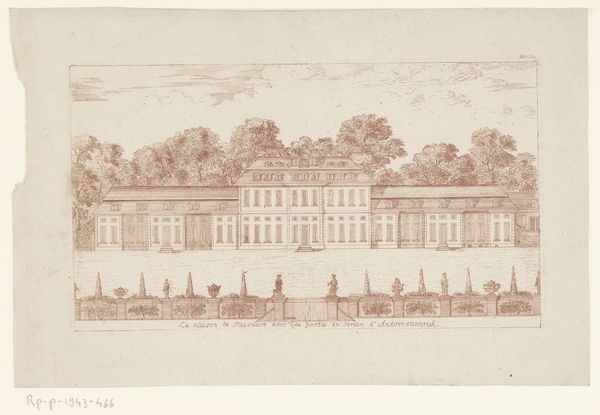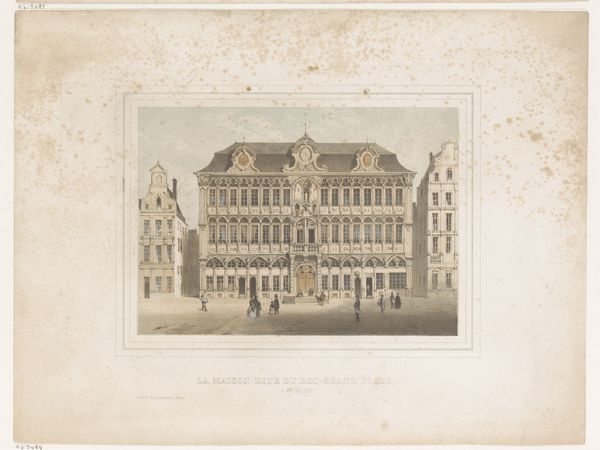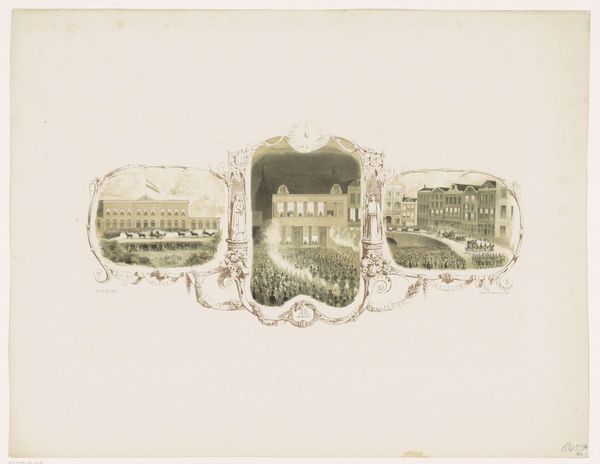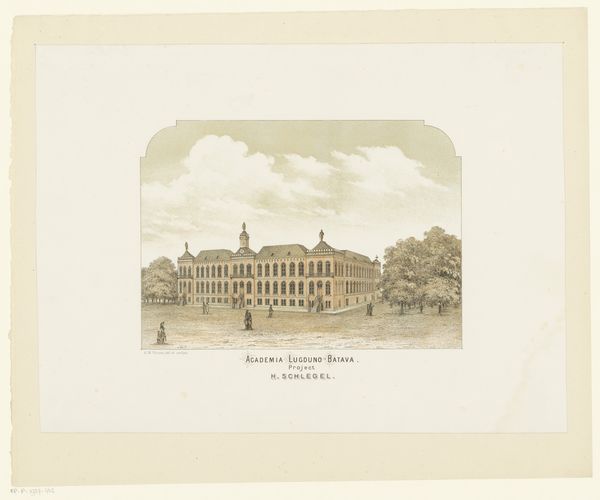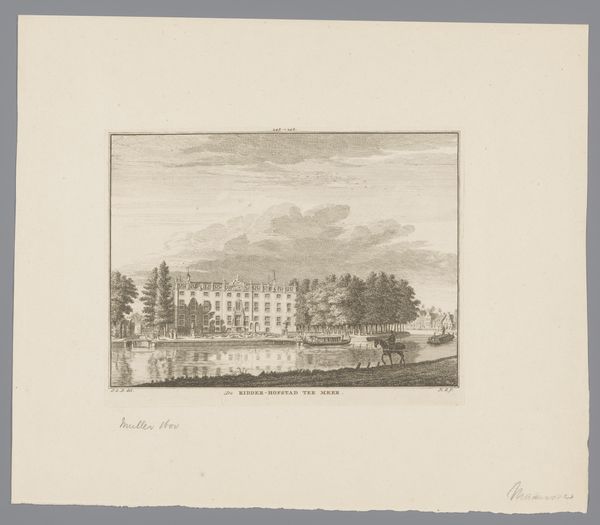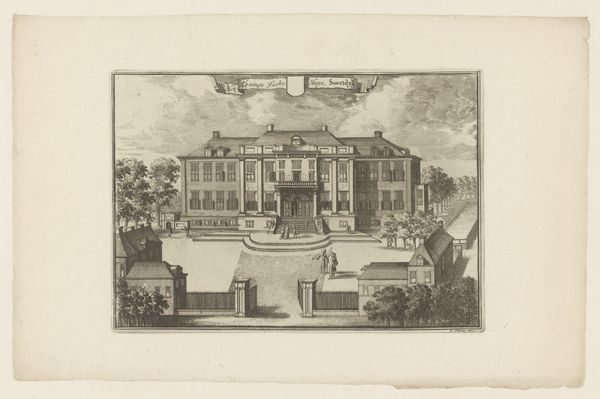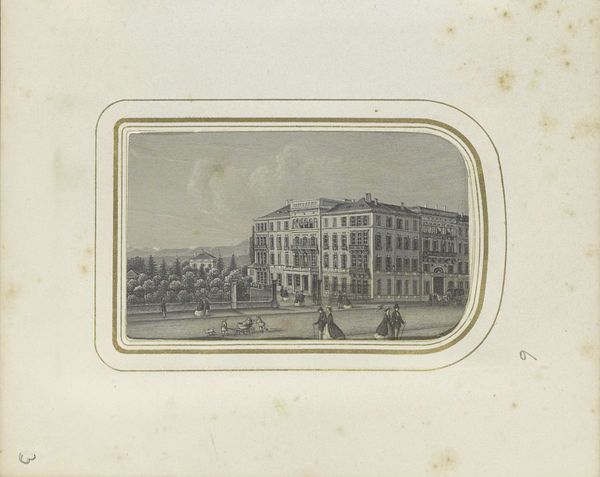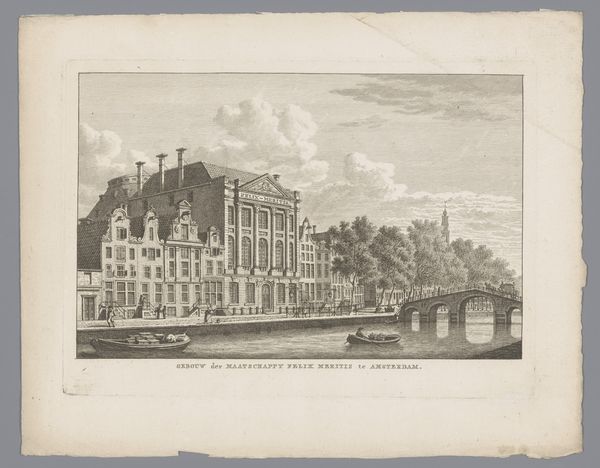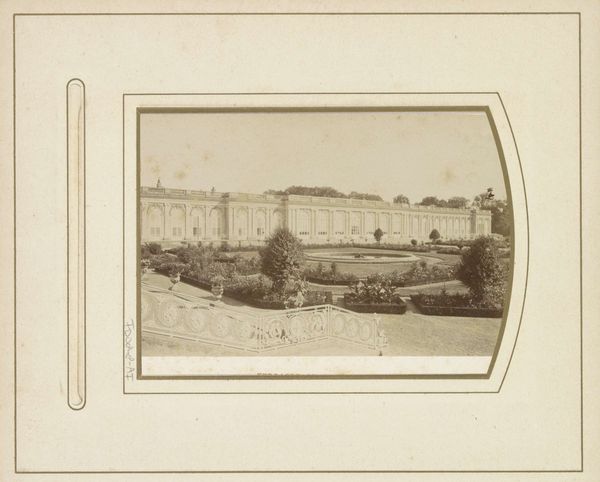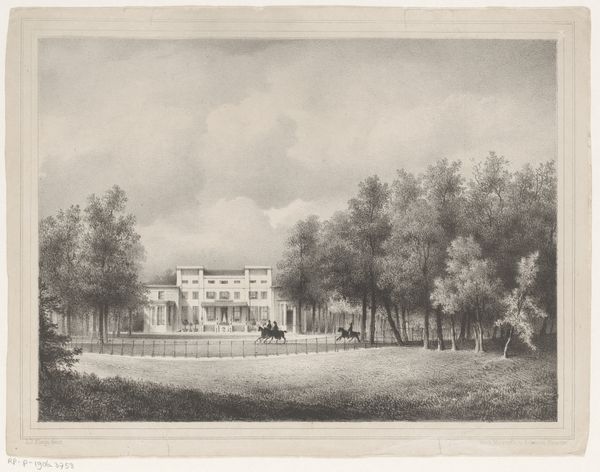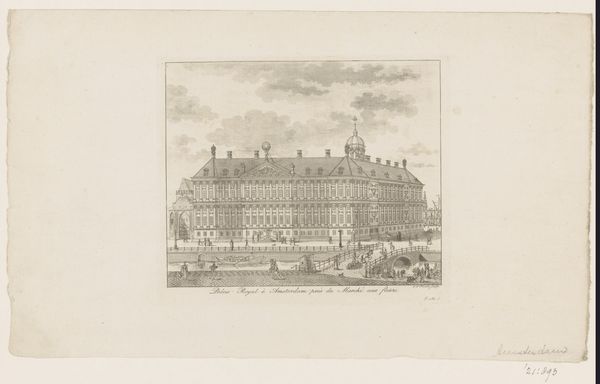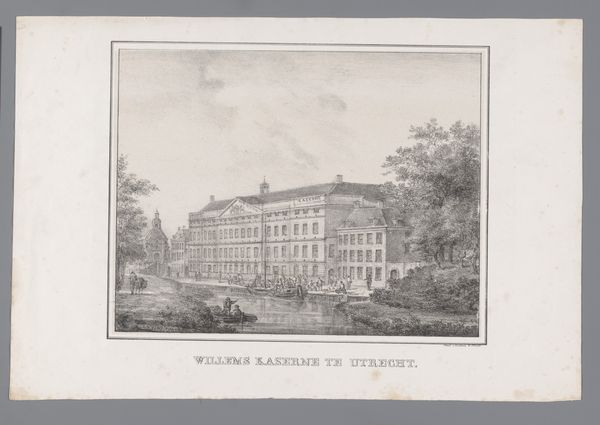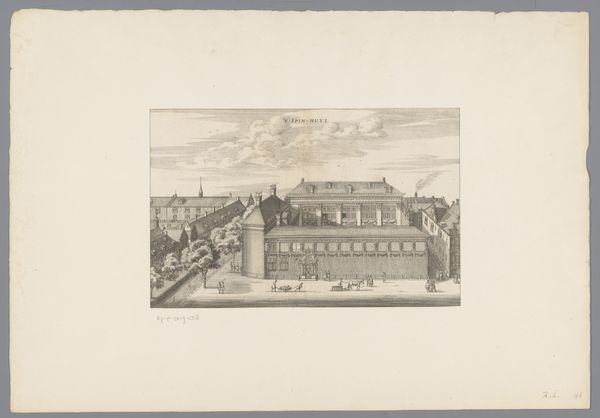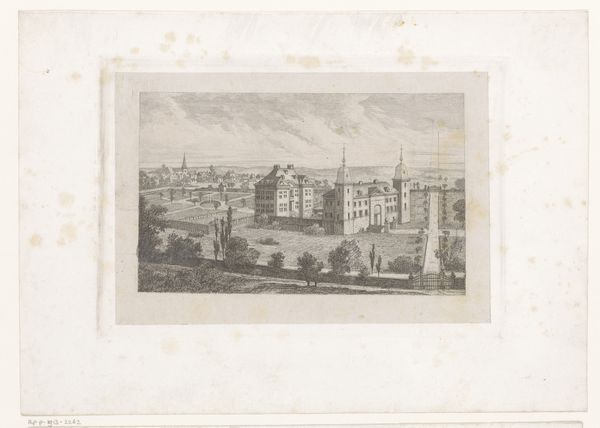
print, etching, photography, engraving
#
aged paper
#
toned paper
# print
#
etching
#
old engraving style
#
landscape
#
photography
#
pencil drawing
#
cityscape
#
street
#
engraving
Dimensions: height 86 mm, width 53 mm
Copyright: Rijks Museum: Open Domain
Editor: Here we have what is described as a phot reproduction of an etching, by Charles Scherrer, dating roughly from 1850 to 1890. It presents a stately cityscape. It makes me think about the dawn of modern photography, still emulating older forms. How does this fit within its historical moment? Curator: It's interesting you note that interplay between the new medium and the “old engraving style” the tag references, isn't it? This period was rife with experimentation. The rise of photography deeply impacted how cityscapes were perceived and documented. Prior to this, meticulous engravings offered curated perspectives of urban spaces, often serving the interests of those in power by presenting an idealized, ordered vision. Photography, with its claim to objective truth, disrupted that control, at least in theory. Editor: So, in effect, did photography democratize city views? Curator: In a way, yes, but access remained stratified. Early photography was cumbersome and costly. Therefore, while potentially more 'democratic,' its initial uptake was still largely shaped by social class and institutional access. Consider who could afford the equipment and who commissioned these photographs – it likely wasn’t the working class, who lived in radically different neighborhoods. Do you see that reflected in the type of architecture pictured? Editor: Absolutely. It depicts quite affluent urban architecture. A public square is there, but carefully curated, manicured, watched over. I see the socio-political influence, and perhaps control over, the city's narrative through visual representation. It’s really making me reconsider who controls image production even today. Curator: Precisely. And remember, photography also played a crucial role in colonialism and surveillance during this era, complicating any simple narrative of democratization. Editor: It’s fascinating how this piece raises questions about representation, access, and control, things I hadn’t considered before!
Comments
No comments
Be the first to comment and join the conversation on the ultimate creative platform.
